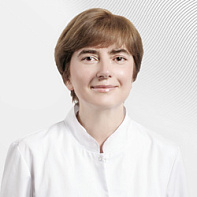Plasmapheresis
The excretion of these substances by the kidneys is either impossible or leads to their damage.
Double effect
The effectiveness of the technique is determined not only by the removal of substances themselves. The loss of a certain part of the plasma causes increased protein synthesis, the release of anti-inflammatory cytokines and growth factors. This improves hematopoiesis, activates the synthesis of collagen and elastin, and improves metabolic processes.
Therefore, to some extent, plasmapheresis procedures have a rejuvenating effect and are actively carried out in EMC in combination with other methods of preventive and anti-age medicine.
Indications for plasmapheresis
In addition to preventive medicine and cosmetology, the procedure is effective in the following pathologies:
-
Blood pathologies (hemolytic anemia, thrombophilia, myeloma, erythrocyte alloimmunization, hemolytic-uremic syndrome, etc.)
-
Neurological diseases (multiple sclerosis, myasthenia gravis, demyelinating diseases, metabolic diseases of the nervous tissue)
-
Rheumatological diseases (systemic lupus erythematosus, rheumatoid arthritis, demathomyositis, systemic sclerosis, gout, metabolic disorders of copper, iron, zinc)
-
Gynecological diseases (pre-pregnancy and IVF preparation – especially after a number of unsuccessful attempts, salpingitis and oopharitis, other chronic inflammation of the female pelvic organs, formation of antiresus antibodies, female infertility)
-
Dermatological diseases (psoriasis, especially severe forms that are difficult to treat, psoriatic arthropathy, cutaneous porphyria, atopic dermatitis, especially forms that are difficult to treat)
-
Pathologies of the liver.
Despite the high efficiency of plasmapheresis, in most cases, a complete cure of the patient cannot be achieved only with this procedure. However, the result will not be long in coming:
-
the patient's condition and well-being will improve;
-
remission of the disease will occur, sometimes for a long time.;
-
the effect of the main therapy of the disease will increase.
In some of these acute conditions, plasmapheresis is the only way to achieve this effect.
Safety of plasmapheresis
The technique has proven its safety in practice.
The amount of plasma that is lost during the procedure is acceptable and invisible to the body.
The standard plasma intake during one session is 500-600 ml, while the blood volume is compensated by intravenous administration of the solution. Infection during plasmapheresis is excluded, since all parts of the device that come into contact with blood are disposable and are disposed of after the procedure.Of course, as with any medical procedure, there is a possibility of complications after plasmapheresis, but it is minimal. The most common consequences are a local reaction in the form of redness, swelling, dizziness, shortness of breath, and short–term fluctuations in blood pressure.
To ensure maximum safety of the procedure, before the first session it is necessary to undergo a simple laboratory examination, and it is also recommended to exclude visits to the bath / sauna / solarium, alcohol consumption, and active sports the day before and the day after the procedure.
There are categories of patients for whom plasmapheresis is contraindicated. The doctor will tell you about the contraindications in detail at the consultation.
Plasmapheresis course
The number of procedures per course depends on the indications and is determined by the doctor. Usually - 3-5 procedures.
The session duration is 1 hour.
Doctors








- A transfusiologist with extensive practical experience and achievements in his specialty
- Graduated from Orenburg State Medical Academy, residency in Transfusiology and internship in Dermatovenerology
- The owner of two commendations from President of the Russian Federation, winner of the contest "My country is my Russia"




